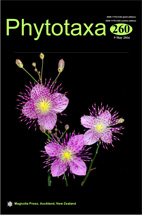Abstract
This paper examines the relationship between Mespilus (medlar) and Crataegus (hawthorn) in both academic and folk taxonomy. Academic taxonomy since Linnaeus has mostly kept Mespilus and Crataegus distinct but not always for correct or adequate reasons. On the other hand, the study of folk-names, explored across 22 European and Near-Eastern modern languages, finds medlar always different from hawthorn, which, from such a large sample, underlines the cultural distinctness of medlar, and supports its taxonomic distinctness. Looking at the earliest recorded usage of the two generic names, in ancient Greece, the Greek names as found in Theophrastus have debatable applications, though this may be due to a corrupt text. The findings of the present paper thus lend support to those in a companion paper by the author clarifying the morphological distinction between the Mespilus and Crataegus, and arguing for the retention of a monotypic Mespilus, which distinction receives support from recent cladistic work.

